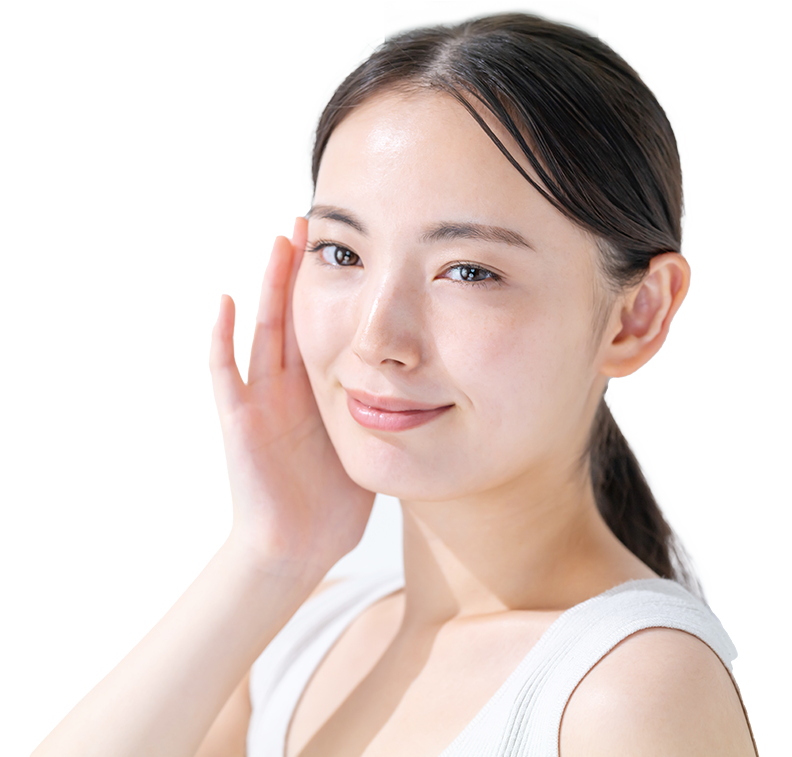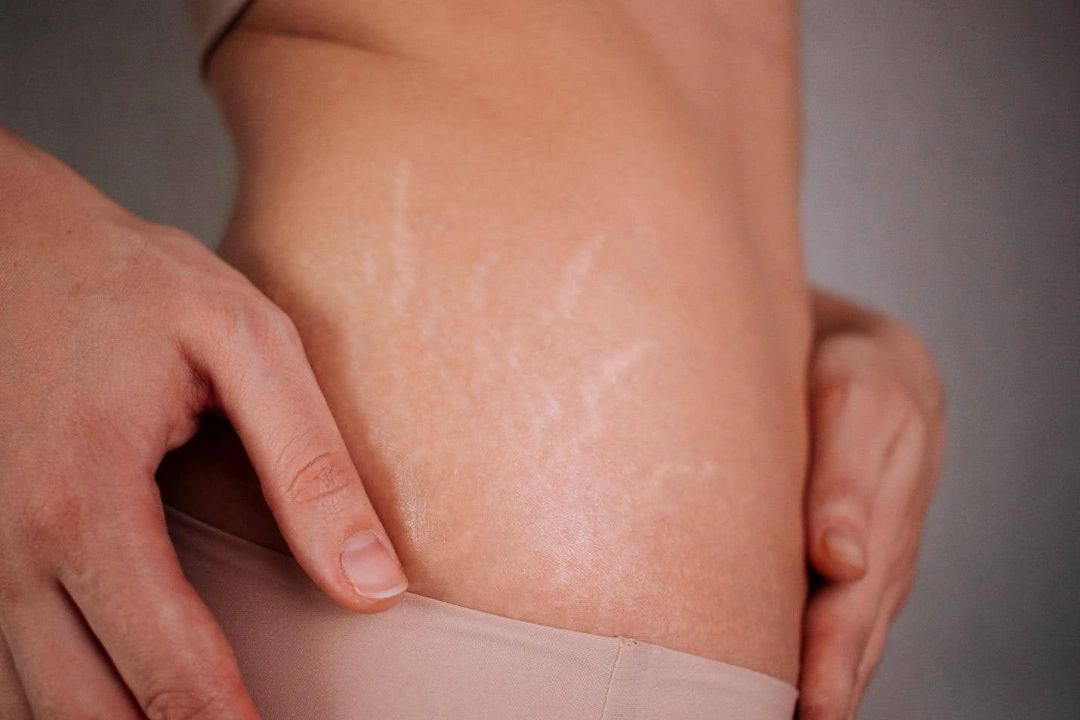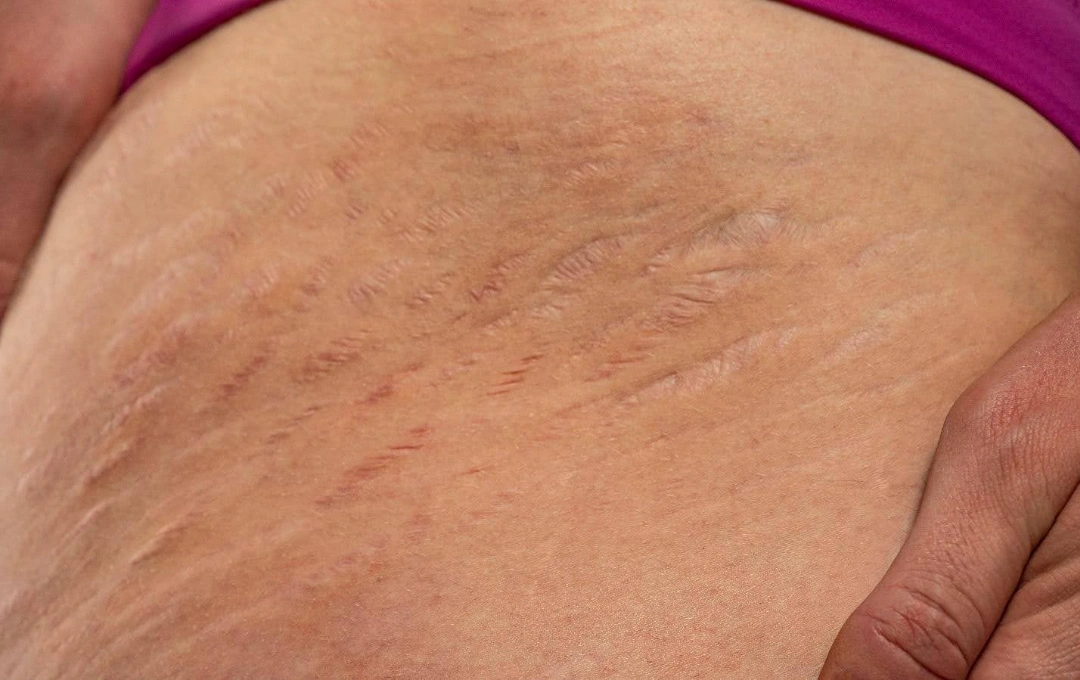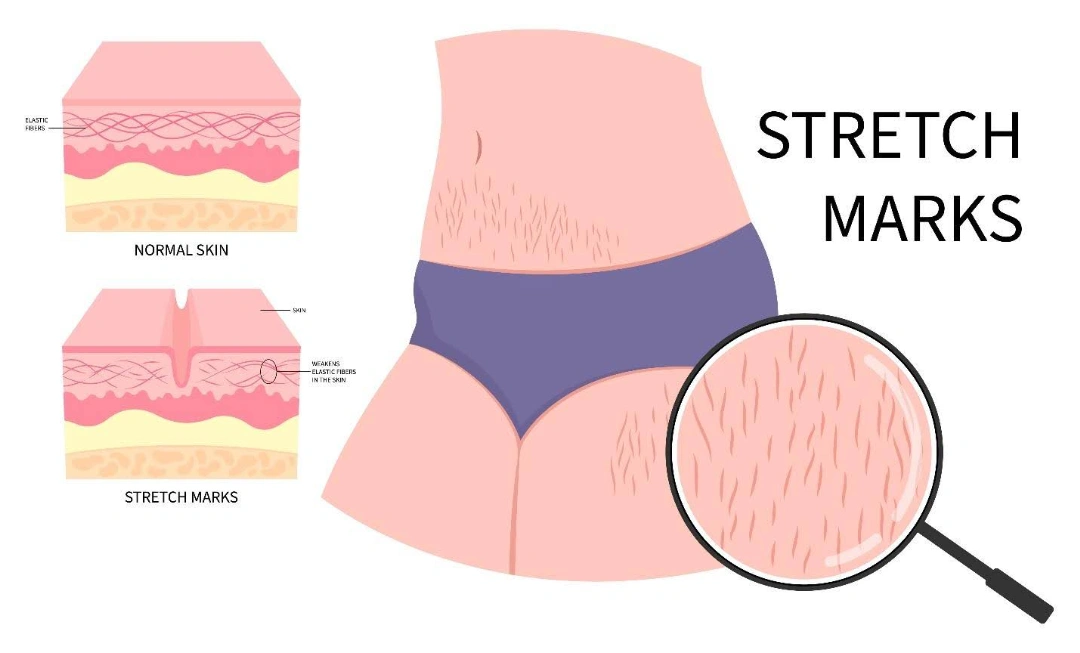At Livingstone Dermatology, we understand that your skin is a reflection of your health and well-being. We are committed to the latest advancements in dermatological science, and dedicated to providing you with quality care.

Stretch marks are a common skin concern that affects both men, and women. These lines or streaks appear when the skin stretches rapidly, often due to growth, weight changes or hormonal fluctuations. While stretch marks do not pose any medical risk, they can affect self-confidence, and body image. Fortunately, several treatment options are available to reduce their appearance.
Stretch marks, also known as striae, are visible lines or streaks that develop when the skin is stretched too quickly, causing the collagen, and elastin fibres to tear. These marks commonly appear as red, purple, or silvery-white streaks on the skin’s surface. Although they are not harmful, many individuals seek treatment to improve their appearance.

Stretch marks develop when the skin stretches or shrinks rapidly, causing the collagen and elastin fibres that support the skin to rupture. As the skin heals, these ruptured areas form narrow bands or streaks, which we recognise as stretch marks.
Some of the several factors that can contribute to their formation include:
The common characteristics of stretch marks include:

Stretch marks can develop on any part of the body where skin stretches rapidly, such as:
Although stretch marks can affect anyone, there are some groups who have a higher risk due to biological and lifestyle factors. These groups include:
Stretch marks are primarily a clinical diagnosis based on a physical examination. A dermatologists assess stretch marks by examining their appearance, texture, and distribution across the body.
What to Expect During Diagnosis
Identifying Contributing Factors
In cases where stretch marks seem excessive, unusual or unrelated to common causes like growth spurts or pregnancy, our dermatologists may investigate for underlying medical conditions. This could involve:

While stretch marks do not pose any health risks, many people seek treatment for cosmetic reasons, especially when the marks are extensive or affect self-confidence. The removal process is often a combination of treatments tailored to the age, severity, and location of your stretch marks.
| Treatment Option | Description |
| Chemical Peels | Medium to deep chemical peels can exfoliate the upper layers of skin, encouraging collagen formation and improving skin texture. This method is useful for improving the appearance of superficial stretch marks. |
| Laser Therapy | Laser treatments, such as fractional laser or pulsed dye laser, promote collagen remodelling by stimulating the skin’s natural healing processes. These treatments work particularly well on newer stretch marks that are still red or purple. For mature, white stretch marks, lasers can improve texture and reduce their appearance by resurfacing the skin. |
| Microneedling | Microneedling creates micro-injuries in the skin, triggering collagen and elastin production. This helps reduce the depth and texture irregularities of stretch marks. When combined with platelet-rich plasma (PRP) therapy, the skin’s regenerative process is further enhanced. |
| Radiofrequency (RF) Treatments | RF therapy uses heat to stimulate collagen production in the deeper skin layers, enhancing skin tightening and improving the texture of stretch marks. |
| Topical Treatments | Prescription creams containing tretinoin (retinoid) can help stimulate collagen production, improving the texture and colour of early stretch marks. Moisturising creams with hyaluronic acid may also enhance skin hydration and elasticity, aiding in skin repair. |
| Combination Therapies | In many cases, combining treatments—such as microneedling with topical retinoids or laser therapy with moisturising treatments—offers the best results. Our dermatologists will customise a treatment plan based on your skin type, the age of your stretch marks, and your desired outcome. |
Regain confidence in your skin with expert care at Livingstone Dermatology. Our qualified dermatologists offer innovative treatments tailored to your skin’s needs, helping to reduce the appearance of stretch marks, and restore smoother, healthier-looking skin.
Schedule your appointment today to discover the most suitable treatment for you.
At what age do stretch marks start to appear?
Stretch marks can develop at any age but are particularly common during puberty, and pregnancy. Adolescents may notice stretch marks during growth spurts, while pregnant women often see them in the second, and third trimesters.
Are stretch marks an indicator of any health issues?
In most cases, stretch marks are a cosmetic concern rather than a health issue. However, in rare cases, they may be linked to underlying conditions such as Cushing’s syndrome or Marfan syndrome. If you have unusually extensive or sudden stretch marks, consult our dermatologist for further evaluation.
Are there any home remedies that reduce the appearance of stretch marks?
While no home remedy can completely remove stretch marks, regular moisturising with products containing hyaluronic acid or vitamin E may improve skin texture, and reduce dryness. Additionally, maintaining a healthy diet rich in vitamins, and collagen-boosting nutrients can also support skin health.
Is cocoa butter effective at treating stretch marks?
Cocoa butter is often promoted as a stretch mark remedy, but scientific evidence supporting its effectiveness is limited. While it moisturises the skin, it does not significantly reduce the appearance of established stretch marks.
Can stretch marks reappear after treatment?
Yes, new stretch marks can develop if the skin undergoes further stretching, such as during subsequent pregnancies or weight changes. Regular skin care, and maintaining a stable weight can also help minimise recurrence.
Can stretch marks disappear permanently?
Stretch marks fade over time, but they rarely disappear completely. Treatments can significantly improve their appearance, making them less noticeable, but permanent removal is unlikely.
Can stretch marks be prevented?
While it is not always possible to prevent stretch marks, you can reduce your risk by: